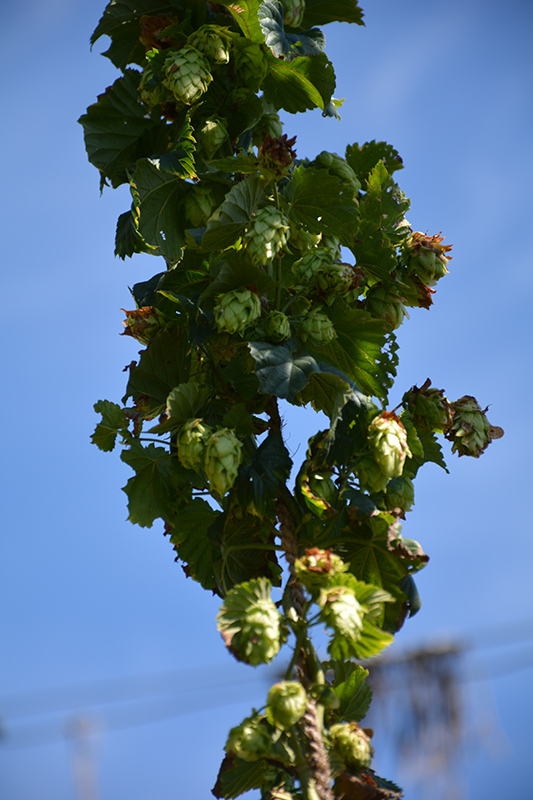Chinook Hops
Description
An attractive, fast growing perennial vine, with cone-shaped clusters of cool-green fruits which are used in making beer; unique and complex flavor and aroma; woodsy, citrus, spicy and smoky notes; very tough and adaptable, needs structural support
Landscape Attributes
Chinook Hops is a dense herbaceous perennial vine with a twining and trailing habit of growth. Its relatively coarse texture can be used to stand it apart from other garden plants with finer foliage.
Chinook Hops is recommended for the following landscape applications;
Planting & Growing
Chinook Hops will grow to be about 15 feet tall at maturity, with a spread of 3 feet. As a climbing vine, it should either be planted near a fence, trellis or other landscape structure where it can be trained to grow upwards on it, or allowed to trail off a retaining wall or slope. It grows at a fast rate, and under ideal conditions can be expected to live for approximately 20 years. As an herbaceous perennial, this plant will usually die back to the crown each winter, and will regrow from the base each spring. Be careful not to disturb the crown in late winter when it may not be readily seen!
This plant should only be grown in full sunlight. It does best in average to evenly moist conditions, but will not tolerate standing water. It is not particular as to soil type or pH, and is able to handle environmental salt. It is highly tolerant of urban pollution and will even thrive in inner city environments. This is a selected variety of a species not originally from North America. It can be propagated by cuttings; however, as a cultivated variety, be aware that it may be subject to certain restrictions or prohibitions on propagation.
Chinook Hops is a fine choice for the garden, but it is also a good selection for planting in outdoor pots and containers. Because of its spreading habit of growth, it is ideally suited for use as a 'spiller' in the 'spiller-thriller-filler' container combination; plant it near the edges where it can spill gracefully over the pot. It is even sizeable enough that it can be grown alone in a suitable container. Note that when growing plants in outdoor containers and baskets, they may require more frequent waterings than they would in the yard or garden.

